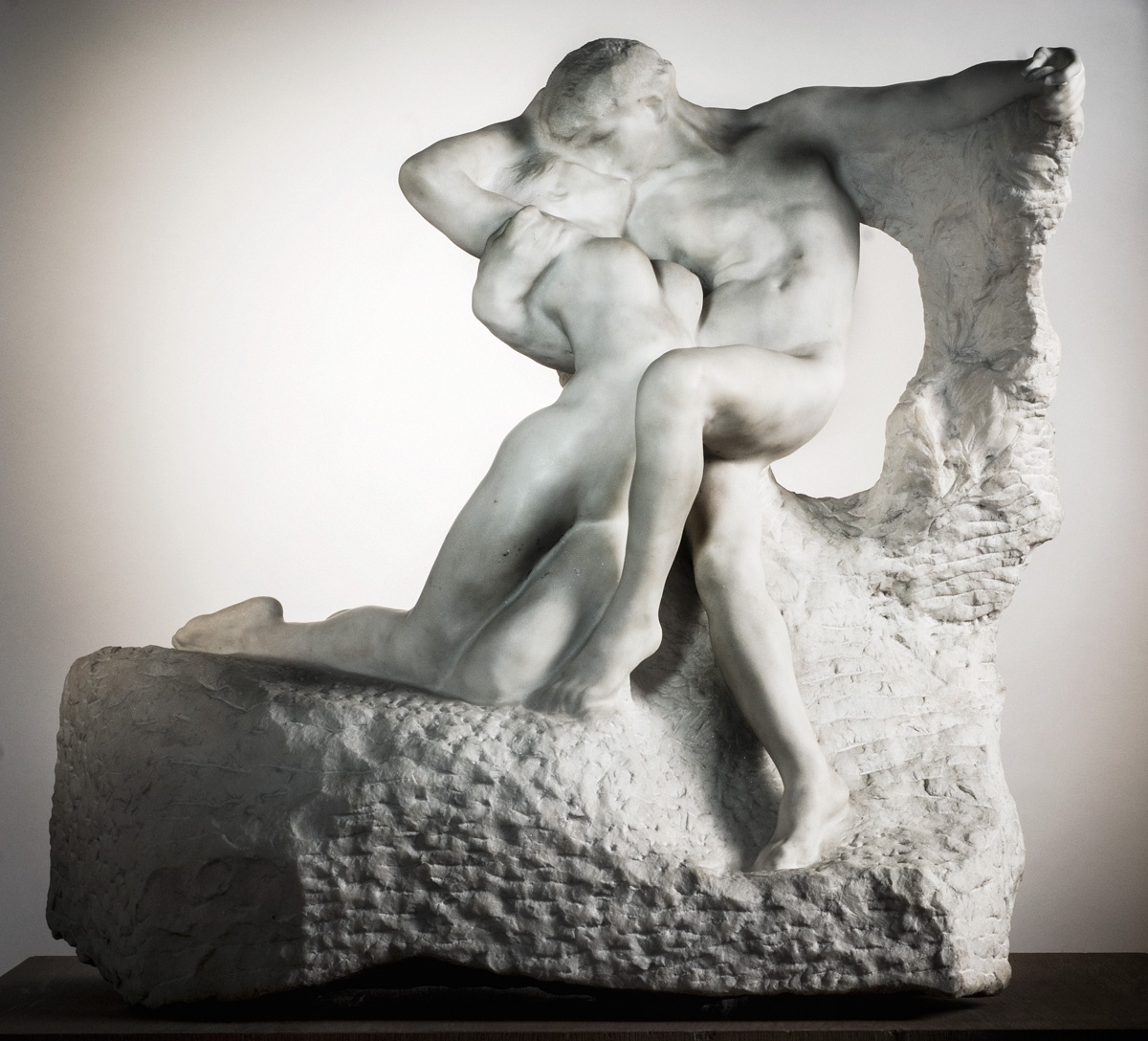Auguste Rodin, the most influential master of modern sculpture, received a commission in 1880 for the main entrance of the planned new Musée des Arts Décoratifs. He decided to decorate the door wings with bronze reliefs with scenes from Dante’s Inferno. The Gates of Hell had a long protracted period of gestation, but the grandiose plan was never realized. The sketches, however, provided countless ideas for other sculptures, including some of his best-known works. Eternal Spring was born of the reworking of just such a detail, a metamorphosis bringing to life smoothly polished forms as they slowly disengage from the block of raw marble and assume the figures of two people. At the centre of Rodin’s universe was the woman as an inspiring muse, the source and destiny of everything. Many of his themes are pregnant with passionate desire or unbridled sexuality, but more than anything he was preoccupied with the beauty of the human body. In the Paris World’s Fair of 1900 the celebrated master set up his own private pavilion to display his works. It was here the plaster parts of The Gates of Hell as well as the independent statues derived from the project went on public display for the first time. Gábor Térey, chief curator of the Budapest Museum of Fine Arts, was deeply impressed by this show, and visited Rodin personally to order works for the museum. This marble Eternal Spring was made upon this commission, and he also bought four other bronze and plaster sculptures from the artist.Ferenc Tóth
en

